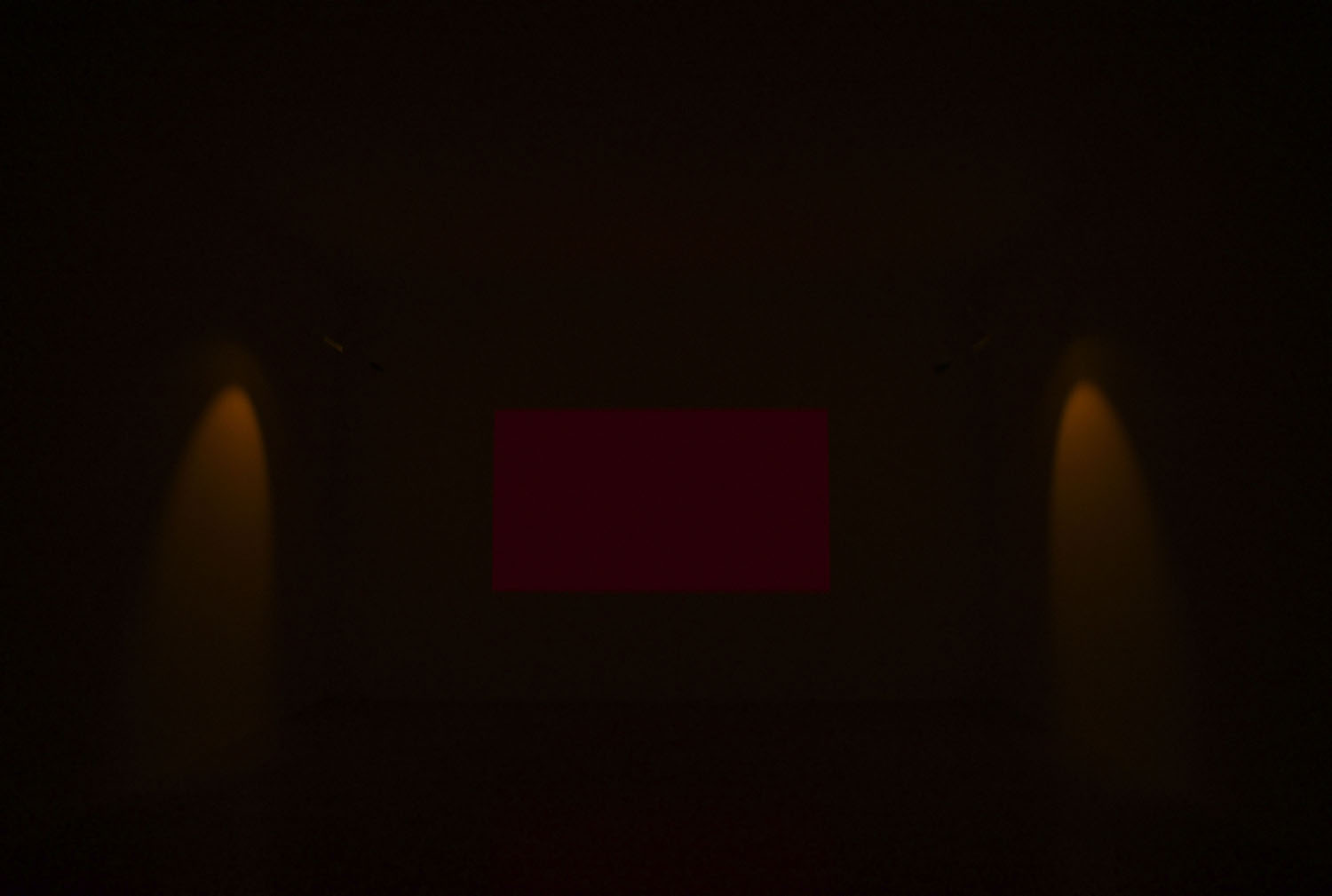Shows
James Turrell’s “Immersive Light”


Since the mid-1960s, James Turrell has devoted himself to an all-consuming exploration, articulation and understanding of a core component of our known universe: light. As one of the pioneering artists of Southern California’s Light and Space movement, Turrell, for the past 50 years, has dramatically transformed spaces around the world along with viewers’ sensory experience of how light alters and affects human perception.
In Turrell’s debut retrospective exhibition in China, “Immersive Light” at the Long Museum in Shanghai, 15 installations of the artist’s most widely recognized, tried and true ideas and works were on view. The grand centerpiece of the exhibition was Ganzfeld, Shangri La (Over the Hump) (2017), which is a large room-size, walk-in atmospheric installation with a cycle of changing colors that envelops the entire space and its visitors. Based on sensory-deprivation experiments that Turrell, along with artist Robert Irwin, and psychologist Ed Wortz conducted as early as 1969, Ganzfeld refers to the German word to describe a “complete field” or perceptual deprivation, also known as the Ganzfeld Effect. Under this phenomenon, one is exposed to unstructured stimuli or conditions as the brain tries to make sense of one’s surroundings. Unable to discern physical dimensions or distance, such as the horizon, one experiences a disorienting loss of depth perception. Pilots flying in massive fog or heavy clouds can experience this; snow blindness during a blizzard also causes this effect known to induce hallucinations.

Other stand out classics in this show, dating from the mid-1960s, were three “Projection Pieces” (1966–69) located in a series of bays below the staircase to the museum’s second floor. Turrell created 37 variations of the “Projection Pieces” over the years. With the use of a single projector casting basic geometric forms onto an opposing corner of a room, an optical illusion occurs, creating a volume and mass floating in space. Works such as Afrum, Pale Pink (1967), a glowing, gravity-defying cube, along with Gard, White (1967), a luminous pyramid or tetrahedron, produced a minimal, pure and mesmerizing effect.
Missing from this exhibition, however, was an example of “Skyspaces,” which Turrell first began making in the mid-1970s. As of 2015, there are now 86 of these works permanently installed and located around the world. These meditative site-specific architectural works are built as autonomous structures or integrated into an existing building, where the artist designs a specifically proportioned room with a single aperture or opening to the sky. An excellent documentary video, Go Inside to Greet the Light (2007), produced by the Yorkshire Sculpture Park and the Yorkshire Quaker Arts Program, was on view in the show and features the artist discussing a number of “Skyspace” projects, such as the Chestnut Hill Friends Meeting House in northwest Philadelphia and Twilight Epiphany (2012), commissioned for the Shepard School of Music on the campus of Rice University in Houston, Texas. “Skyspace” is a series of contemplative architectural installations that inherently instill a sense of tranquility, wonder, perhaps something even spiritual, and become a naked eye observatory in which to experience the sky and the natural passage of time and light.
Some of the installations in this exhibition were
difficult to navigate, such as Wedgework, New Dimensions (2016) and Space Division, Deep Breath (1982)— the pitch-black, maze-like corridors leading into these works made it nearly impossible to enter or exit without running into a wall or other visitors. Understandably, in order to fully experience some of Turrell’s installations, they require light-locked rooms to create ideal conditions. However, while Turrell might like the trust factor involved, or the groping required to steer through total darkness, it felt slightly disconcerting (and uninviting) when all that might be needed is an accommodating usher with a penlight.


The ongoing project Roden Crater, arguably Turrell’s most ambitious and culminating work of his career—the massive multi-chamber earthwork in Arizona’s Painted Desert—was given short shrift in this show. A single-color photograph of the monumental crater along with only a smattering of topographical prints, located on the second floor, failed to fully give the sense of magnitude or the importance to this heroic project. Turrell first discovered the extinct volcanic crater in 1974, wanting to bring his ideas to the great outdoors. For nearly four decades the artist is still transforming the inner cone of the crater, designed to become an enormous naked eye observatory for viewing the sky. With the initial help from the DIA Foundation in the early 1970s, Turrell eventually acquired the 400,000-year-old, 3-mile-wide (4.8 km) crater in 1979. Not since Robert Smithson’s iconic Spiral Jetty (1970), extending out into the Great Salt Lake in Utah, has an American artist envisioned a project of this scale or undertaking. Turrell’s Roden Crater, when completed, will contain 21 observation rooms and 6 tunnels. With its 2011 project completion date long past, it still remains closed to the general public. For now a desert pilgrimage to commune with the cosmos will have to wait.
James Turrell's "Immersive Light" is on view at Long Museum, Shanghai, until May 21, 2017.







